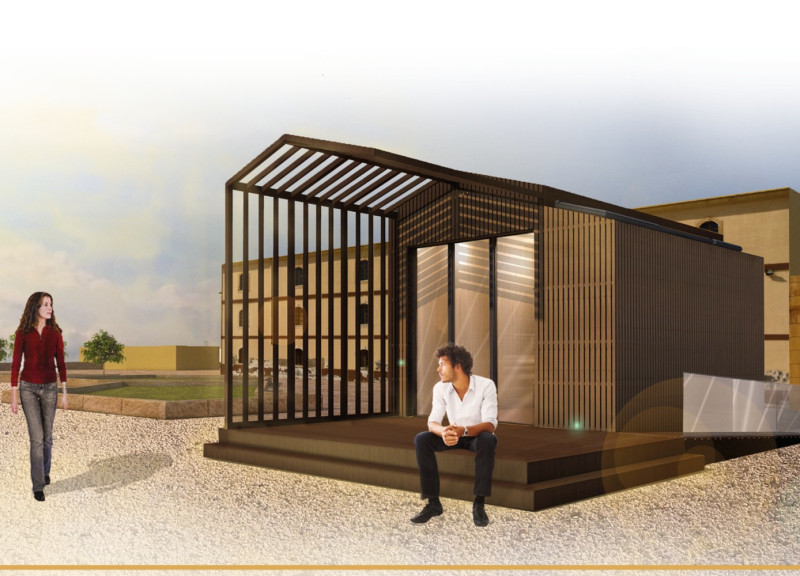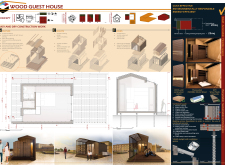5 key facts about this project
The Wood Guest House Modular project features a practical response to contemporary living needs by integrating modular design with sustainability. Located in a tranquil environment, the compact residence accommodates various functions, including living, working, and semi-outdoor spaces. The design emphasizes flexibility and efficiency, allowing for a strong connection to nature while prioritizing comfort and usability.
Structural Integrity
The building relies on a screws foundation, which reduces the need for conventional concrete construction. This method offers both stability and a lower environmental footprint. In conjunction with the foundation, aluminum supports are used for WPC Wood decking, creating a lightweight yet sturdy framework that underpins the structure.
Material Efficiency
The design incorporates structural CROSS-LAM panels in horizontal, vertical, and inclined configurations. These panels enhance the building’s strength and improve insulation properties. Vertical and inclined insulating panels further promote energy efficiency, ensuring that the interior remains comfortable while keeping energy use low.
Ventilation and Natural Light
Thoughtful ventilation strategies are also a part of the design. Vertical ventilation battens and inclined features work together to enhance airflow within the guest house, ensuring adequate fresh air circulation in a compact space. Furthermore, the inclusion of an inclined VELUX skylight brings in natural light, creating a bright interior and reducing the need for artificial lighting during the day.
Sustainability Features
Sustainable elements are integral to the design with the use of external photovoltaic INVISIBLE SOLAR-WOOD technology. This solar energy feature allows the residence to generate its own power, contributing to a lower environmental impact. The aesthetic design remains intact, aligning with the overall style of the guest house.
Attention to detail is visible in the use of vertical waterproof wooden slats for the internal finishes. This choice provides a warm and inviting atmosphere while ensuring functionality and durability in the living spaces. The result is a harmonious balance between practicality and aesthetic appeal.


















































